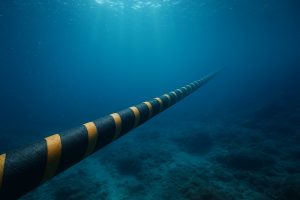In 4 months, the engineer made the technologies standardization used in a beverage company telepresence rooms with global performance. Action helped to eliminate crashes and connection failures in client operation
Telepresence rooms offer more agility and practicality for a company operation. But, what to do when video conferencing technologies do not communicate with each other?
When it happens, the result is almost always the same: environment crisis, generated by the instability and network connection fall, preventing the information and experiences exchange in distance meetings.
It was the experienced scenario by a beverage company, which, during its merger with another company, quickly expanded its network to more than 600 telepresence rooms spread across several countries. And in each of them with a different configuration…
It was in this situation that Nap IT Network Engineer, Erik Ramos, was called. “In meeting environments, there was no network infrastructure management. Each country had its configuration and it implied problems for the telepresence quality, “he reports.
Cutting the evil down: unifying the telepresence rooms
The default setting absence between telepresence rooms resulted in instability and lots of connection problems. In practice, the company was unable to hold distance meetings, which created stress in the communication processes.
The first step to solve the problem, according to Erik, was to make cluster adjustments (computers set that perform the same function through software). “Each device had a different software and firmware version. So, the output was to create a standard template for everyone”, he says.
Then it was necessary to work on telepresence security. One of the decisions in this field was to cut off access from people who did not need to use such equipment.
Making this restriction, the Nap IT engineer conducted a Collab Assessment, which evaluated the entire network infrastructure. “Mapping is a standard procedure, which helps us to see possible conflicts and failures, guiding a faster and more accurately action”, he explains.
After stabilizing the environment infrastructure, it was time to configure QoS (Quality of Service). The goal was to prioritize video traffic, preventing data compression from compromising the videoconferencing images and audio transmission.
Ensuring the environment quality
Another key-point to reinforce the meeting experience was to integrate all telepresence rooms, creating standard setup rules for all offices around the world.
Results and Benefits
The whole mapping process and problem solving took four months and, at the integration end, there were no more complaints.
“The environment today is stable and we have had positive feedback from all locations, exposing how the telepresence quality could help and improve the company’s operation globally. It has resulted in lower costs and better quality customer service”, said Ramos.
And you? Do you want to have a successful case as this one within your company? So, talk to our consultants now and know how to secure high-performance telepresence rooms and networks!







